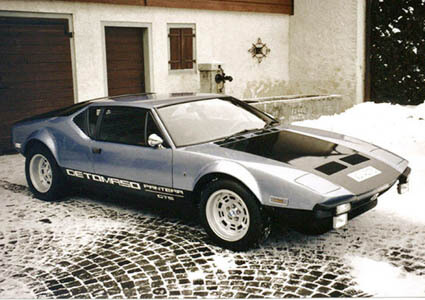1979 Mazda RX7: The Dream That Didn’t Last
Inspired by the awesomeness of my stepmother's 280ZX, I thought I had found something even better in the form of a 1979 Mazda RX7. It was like the Z-car's little brother—sleek, stylish, and lightweight—but with a twist. The RX7 was equipped with a special lightweight Wankel rotary engine that was both compact and unique. The flip-up headlights were a standout feature for me at the time, adding a touch of futuristic flair and improved aerodynamics.
I was absolutely smitten by the RX7. It wasn’t just a car; it was a symbol of freedom and excitement. Its compact size made it nimble and fun to drive, a marked contrast to the larger, bulkier cars I’d had before. Unlike other vehicles on the road, the RX7 didn’t just blend in—it stood out. The design was sleek and low to the ground, giving it an aggressive yet refined look. I loved the fact that the RX7 looked fast even when it was parked.
The rotary engine was one of the reasons I was so excited about this car. Unlike the conventional piston engine, the rotary engine used a triangular rotor that spun inside a housing, which allowed for smoother performance and high-revving power. It sounded unique too—sort of like a high-pitched buzz. This distinctive engine made the RX7 feel like an exotic car, even though it was still relatively affordable compared to other sports cars of the time.
The car I had was a 1979 model, which was already a few years old by the time I got it, but it still had plenty of life left in it. The body was in good shape, the paint was fresh, and it even had some upgraded wheels from a newer model. The interior was clean and sportily designed, with bucket seats that hugged you just enough to remind you this car was made for driving. I spent hours tweaking the stereo system, not that it mattered too much because I was always more interested in the engine’s hum than anything else.
The performance of the RX7 was impressive—particularly its handling. It felt agile and responsive around corners, the rear-wheel drive providing that perfect sense of control when navigating tight curves. You could really feel the car's balance, and the handling became second nature as I drove it more and more. Accelerating from a standstill was exciting, and you could feel the car come alive as it revved through the gears. The RX7 was a car that truly made you feel connected to the road, which was a welcome change from the other, less-responsive vehicles I’d owned in the past.
But of course, nothing in life is perfect, and that was true for the RX7 as well. As much fun as it was to drive, the car did have its quirks. The Wankel engine, despite its unique design and reputation for high-revving performance, wasn’t without its issues. One of the most well-known problems with the RX7’s rotary engine was its tendency to consume oil at a faster rate than a conventional engine. As time went on, I began to notice that the RX7 started to burn more oil than it should have. The engine began to smoke—first just a little, then more and more.
At the time, I was still pretty young and didn’t fully understand the intricacies of maintaining a rotary engine. I had heard about the maintenance requirements but didn’t truly grasp how important it was to stay on top of the oil levels and overall engine care. As the smoke became more noticeable, I realized something was wrong. I wasn’t able to afford the expensive repairs that would have been necessary to fix the engine, so the RX7 continued to decline.
Eventually, the engine became unreliable. The rings in the rotary engine were wearing out, and soon, the car was consuming more oil than gas. It was sad to watch, especially considering how much I had loved the car when I first bought it. But there was only so much I could do. I couldn’t afford to keep pouring money into the car for repairs I couldn’t afford. I made the tough decision to give it to my sister, asking her to get rid of it for me.
I had hoped that someone with the right knowledge and tools would be able to bring the RX7 back to life, but that wasn’t the case. I had already stripped it of the most valuable parts, and the car was really beyond repair. I even gave my buddy the bigger engine and the 5-speed transmission in hopes that they would be useful for another project, but it never came to fruition. The RX7 became just another vehicle that I couldn’t keep running.
It’s funny—looking back on that time, I realize that even though the RX7 didn’t last long in my possession, it was an incredibly influential car in my life. It taught me a lot about maintenance, about the importance of taking care of your vehicle, and about the limits of what even the coolest cars can endure. I also learned that sometimes, a car that seems like it’ll be the ultimate thrill ride can quickly turn into a costly burden.
Despite its eventual demise, the Mazda RX7 was one of the most fun cars I ever drove. It was a symbol of youthful exuberance, a vehicle that promised endless fun and adventure, even if it couldn’t hold up in the long run. It didn’t have the longevity I had hoped for, but the memories of driving it are still vivid to this day.
When I look back at the RX7, I think about how it made me feel behind the wheel. That feeling of invincibility and freedom that comes with driving a car that is both fast and agile is something I will always cherish. Sure, the RX7 had its flaws, but it was a car that embodied the spirit of adventure. Even though it ultimately gave out on me, it taught me the importance of taking care of what you love, and that’s a lesson I carry with me to this day.





















